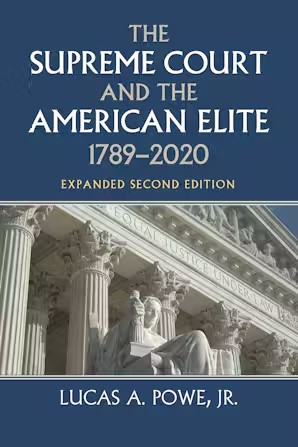We will be closed from 5pm Thursday 17th April for the Easter Bank Holidays, re-opening at 8.30am on Tuesday 22nd April. Any orders placed during this period will be processed when we re-open.

The Supreme Court and the American Elite, 1789–2020, Expanded Second Edition is a history of the Court placed within the context of a broader history of the United States and its politics. In contrast to a typical book on US history—where the Supreme Court appears, if at all, as an interruption here and there—or, in a typical history of the Supreme Court, where political events intrude occasionally, Lucas A. Powe, Jr., situates the Court and its work into a broad narrative of American history. Powe places the Court within the context of history and the insights of political science while remaining true to the ways the justices perceived their own work. Instead of viewing the Court as a competitor with the other two branches of government (although occasionally it is), Powe views it as a part of a ruling regime doing its part to implement the regime’s policies. Some of its most historically controversial decisions are far less so when set within the politics of the time. Justices are, after all, as subject to the same economic, social, and intellectual currents as other upper-middle-class professional elites.
The book’s dominant theme is that the Court is a majoritarian institution—that is, it identifies with and serves ruling political coalitions. The justices are for the most part in tune with their times. Relatedly, changes in personnel matter; a president able to appoint several justices can, and does, change the direction of the Court. Thus, the Court and its decisions have moved to the center of presidential politics.
This new edition adds two chapters detailing the history of the Court since 2008, including how the Court has changed election law, its entrance into the healthcare controversies, expansion of LBGTQ rights, and the 2020 Census controversies. The first new chapter looks at the centrist jurisprudence of Justice Anthony Kennedy and his dominant presence as the decisive vote in a series of 5–4 decisions. The second looks at the toxic partisan political climate in the aftermath of Justice Scalia’s death and Republican control of the Court.